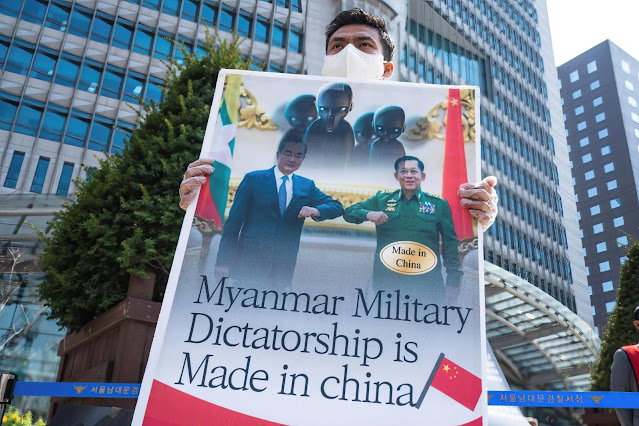Myanmar Spring Chronicle – December 14 Perspectives
Moemaka, December 15, 2024
Military Council Delegates Arrive in Kunming, China, for Ceasefire Negotiations
To reduce the escalating armed conflicts in Myanmar, China’s mediation efforts began in late 2023. After the launch of Operation 1027, within a few months, China attempted to broker discussions between Myanmar’s military council and ethnic armed groups in northern Shan State and Kachin State, regions sharing borders with China.
In December 2023 and January 2024, ceasefire negotiations took place in China’s Yunnan Province, attended by the military council’s Union Peace Negotiation Committee and leaders of some ethnic armed groups. Although no ceasefire agreement was reached during December discussions, subsequent talks on January 10-11, 2024, resulted in a ceasefire agreement known as the “Haigen Agreement.” Following this agreement, large-scale clashes temporarily subsided, only to flare up again in late June.
During the first phase of Operation 1027 in late 2023, the military council attempted to reclaim territories in northern Shan State but suffered additional losses of towns, military bases, and regional command centers in July and August 2024.
By August, with ethnic armed groups gaining control over strategic areas, China’s policy stance became more apparent. China declared its priorities regarding Myanmar: stability and resolution through political dialogue, protection of Chinese investments, and opposition to external interference by other nations. This stance was reaffirmed at the Mekong-Lancang meeting in Chiang Mai, Thailand, in mid-August.
China prefers a centralized government in Myanmar, regardless of whether it is democratic or federal, as long as it does not foster close ties with Western powers like the United States. This aligns with China’s strategic interests, particularly in safeguarding its oil and gas pipelines and planned trade routes, including a proposed railway line through Myanmar’s Rakhine coastline.
Myanmar’s geographic position makes it a crucial trade and logistics hub between East Asia, South Asia, the Middle East, and Europe, with the Bay of Bengal and Indian Ocean serving as vital sea routes. For China, Myanmar offers the shortest overland route from its Yunnan Province to the sea, crossing through northern Shan State, Mandalay, Magway, and Rakhine State.
This geopolitical importance makes Myanmar more than just a neighboring country for China. As the world’s second-largest economic and military power, China is strategically focused on preventing Western-aligned governments or armed groups from gaining influence in neighboring states.
Given this understanding, it can be inferred that China’s relationship with Myanmar’s military council involves a combination of pressure, support, and agreements. China’s priority is less about individuals like Min Aung Hlaing or the military itself and more about preserving a centralized system of control, which aligns with its strategic interests. China’s choice to support the military council appears pragmatic, not sentimental—driven by a lack of better alternatives. Should a more reliable centralized partner emerge, China might reconsider its alliances.
China’s approach toward Myanmar revolves around strategic interests, policies, and pragmatism. The upcoming ceasefire negotiations in Kunming between northern Shan ethnic armed groups and the military council could provide further clarity on China’s intentions.
For the National Unity Government (NUG), its policies toward China must consider China’s preference for centralized governance. China may scrutinize whether the NUG possesses effective control over armed groups on the ground and whether it represents Western governments or organizations. These factors are likely to influence China’s approach toward Myanmar and its competing stakeholders.

